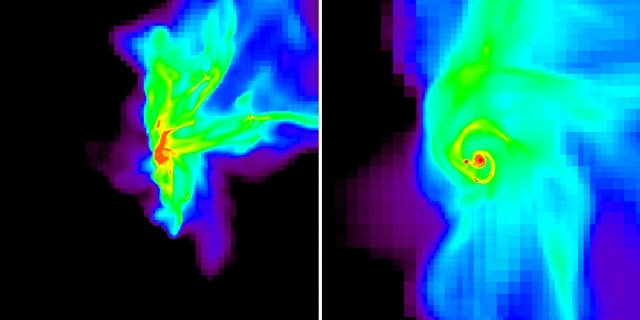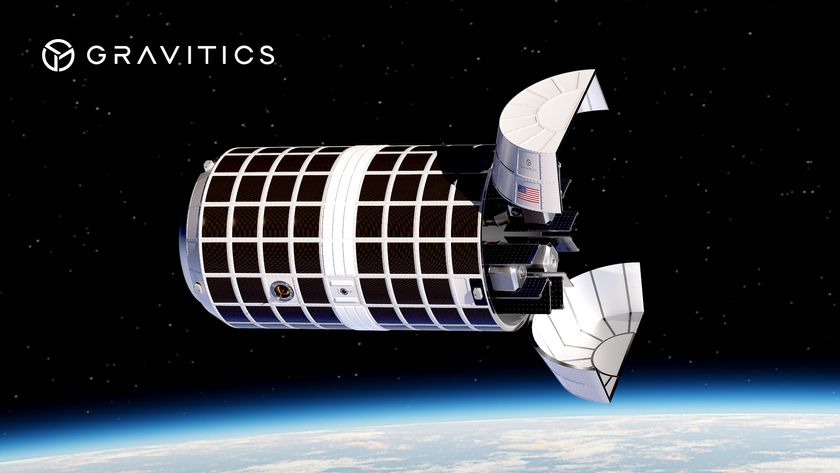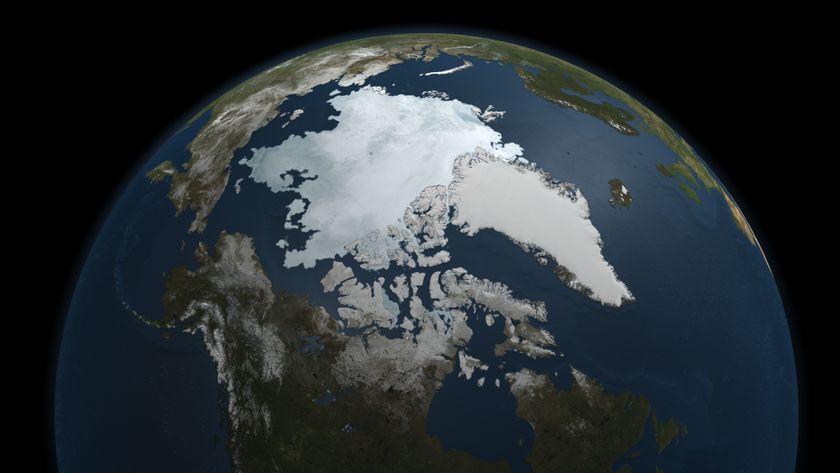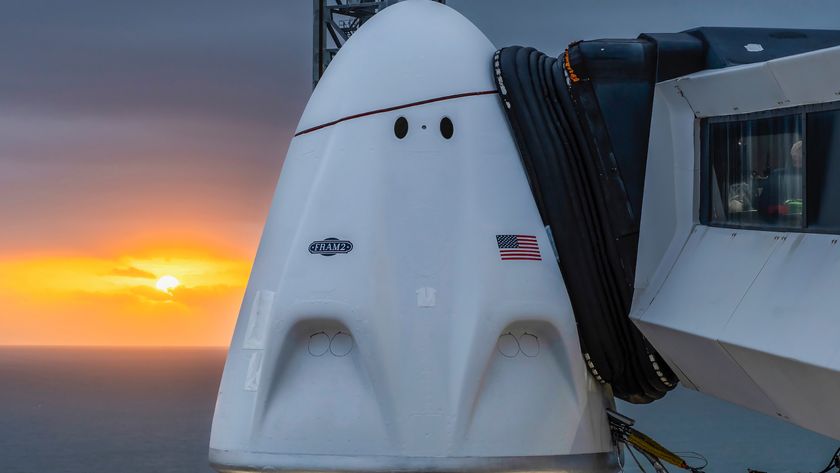Super Stars Require Right Environment to Rise

Hollywood megastars need just right the rightconditions to explode onto the scene, a phenomenon shared by rare supermassivecelestial stars.
Twoscientists think they have decoded the gassy recipe to create stars as much as100 times bigger than the sun, perhaps solving the mysteryof their formation. Mark Krumholz Princeton University in New Jersey and hiscolleague Christopher McKee of the University of California Berkeley usedmathematical models to show how small stars can primesuperstar formation.
"Gravitytends to break interstellar gas clouds into small pieces, preventing massivestar formation," Krumholz said. "But little stars heating up a gascloud can smooth it out, forcing gravity to create a hugestar."
Krumholzand McKee detail their findings in the Feb. 28 issue of the journal Nature.
Starpower
Althoughmassive stars are about a million times rarer than the most common stars —those about 80 percent smaller than the sun — they are the movers and shakersof the universe.
"They'revery rare, but massive stars are the dominant players in galaxies,"Krumholz said. "They're the things that can push around and heat upinterstellar gas, which is essentially where all stars come from."
Get the Space.com Newsletter
Breaking space news, the latest updates on rocket launches, skywatching events and more!
He alsoexplained that big stars seed the cosmos with elements that are required for life.
"Theyenrich the universe with metals from theirsupernovae," he said, noting that only enormous stars are powerfulenough to fuse together small atoms and create the heavy materials.
Hotinfluence
To form agalactic superpower, Krumholz said an interstellar gas cloud needs to bethousands of times more dense than average. Problem is, gravity tends to breakdense gas clouds into pieces and thwart massive star formation.
"Thechallenge isn't getting enough gas, it's getting the cloud into a small enoughregion and preventing its breakup," he said.
If a fewsmall stars form within the cloud, Krumholz explained, they can heat up thecloud and increase its "column density," or pressure. The heatingprocess prevents gravity from taking control of the cloud, breaking it up andforming only small stars.
"Heatingup the gas helps pressure win over gravity's influence, ultimately forcing thegas cloud to collapse in a massive star," Krumholz said.
The newview of star formation highlights the rarity of massive stars — the only kindastronomers on Earth can seein distant galaxies — but leads to the possibility that more stars form ingalaxies than previously thought.
"Theremay be significant parts of galaxies where massive stars can't form, butlower-mass stars like the sun can," Krumholz said. "We estimate thenumber of stars in a galaxy on the amount of light we see, and if massive starsare missing, then it's possible that we've dramatically underestimated the rateof star formation in distant regions of the universe."
- Top 10 Star Mysteries
- Massive Star Formation Relies on Cosmic Doughnuts
- The 10 Brightest Stars
Join our Space Forums to keep talking space on the latest missions, night sky and more! And if you have a news tip, correction or comment, let us know at: community@space.com.
Dave Mosher is currently a public relations executive at AST SpaceMobile, which aims to bring mobile broadband internet access to the half of humanity that currently lacks it. Before joining AST SpaceMobile, he was a senior correspondent at Insider and the online director at Popular Science. He has written for several news outlets in addition to Live Science and Space.com, including: Wired.com, National Geographic News, Scientific American, Simons Foundation and Discover Magazine.










